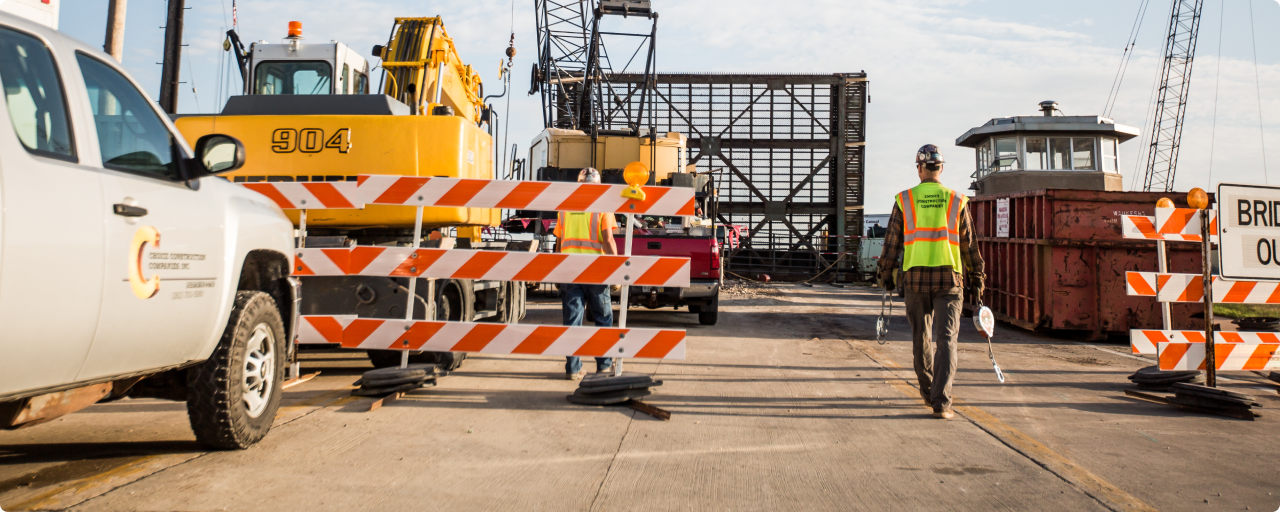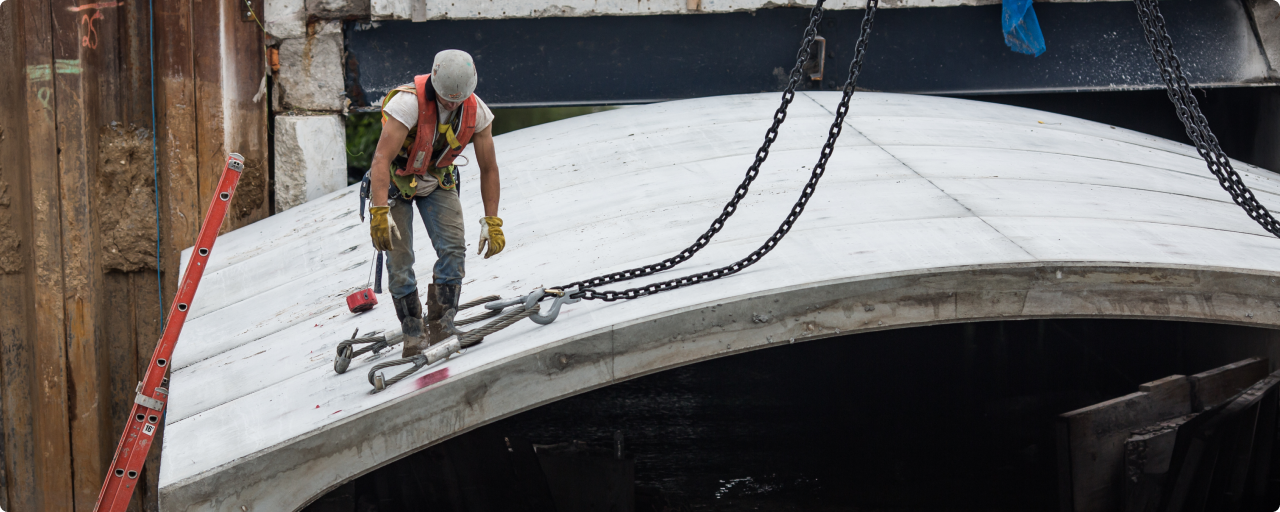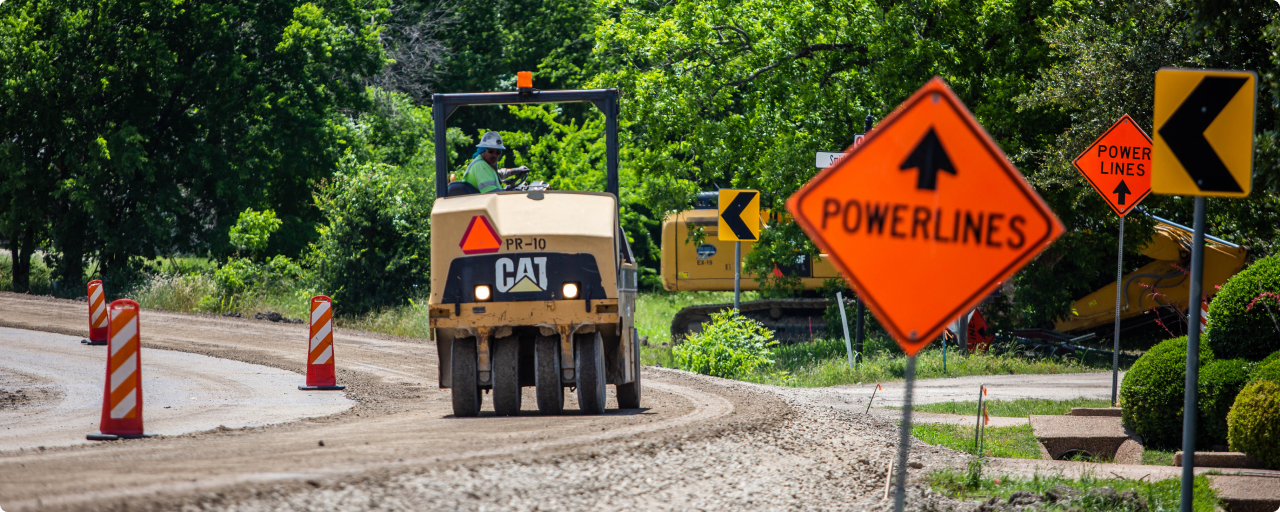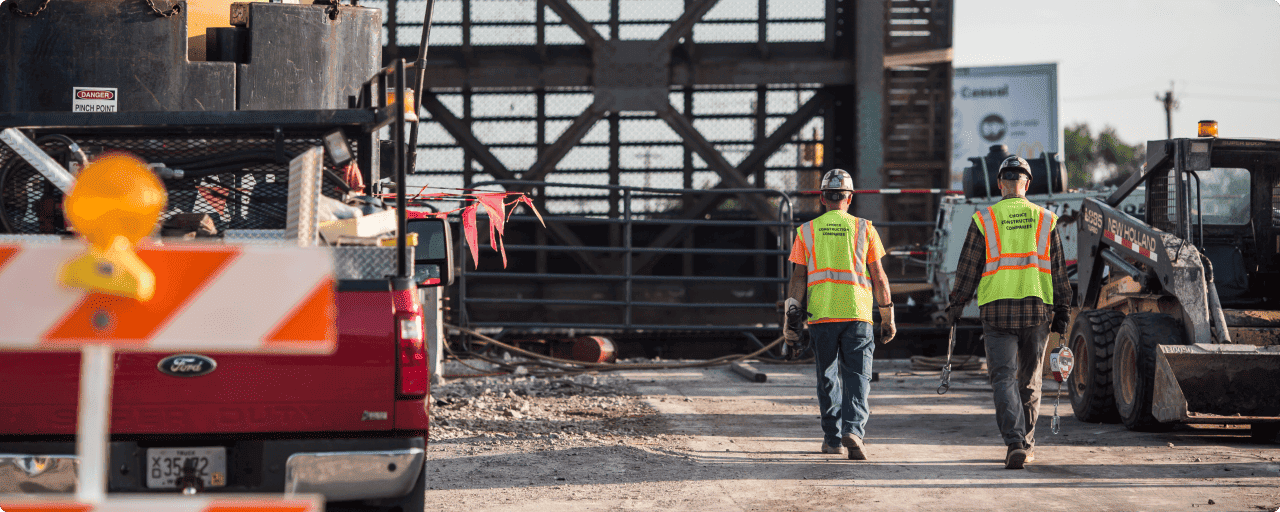Do you have a lot of accidents or incidents? Are insurance costs high? Or do you have an off-the-shelf safety program with signs all over the place and campaigns that measure short-term results?
If you answered the latter, you might think your business is doing ok when it comes to safety.
But you might be wrong. What if you found out safety campaigns and incentive-based programs weren’t the answer to a world-class safety program?
In fact, it’s much more basic – and cost-effective – than all that.
The prevailing theory on safety management in construction – and in most industries – is that world-class safety programs are much more informal, without the hype of designated safety initiatives. Safety in these successful companies is the responsibility of every person in the organization, from the owner to the supervisors to the employees in the ield. Each person’s responsibilities are clearly deined, and accidents are not tolerated at all.
In contrast, companies that consistently experience incidents and fail OSHA inspections are irmly lodged in what is known as the “S.W.A.M.P.” – Safety Without Any Management Processes. And they often don’t even realize it.
What is the SWAMP?
Companies in the SWAMP assign no recognized safety responsibility, often even rejecting the idea that safety should be monitored by the organization. They also fail to assign responsibility to anyone in the organization. Safety is perceived as a burden to the company, its management, and workers; it is seen as something that compromises production and slows down work.
In turn, these organizations often experience high insurance costs and high losses when an incident does occur, and they may even face employee litigation from injuries or state and federal ines for not following regulations.
Managers in SWAMP companies see accidents as accepted, or even expected. Incidents are just “the cost of doing business,” and planning for safety is minimal and short-term, often reacting to incidents rather than planning to avoid them. There are no human resources policies and procedures in place to handle incidents or the arguments that arise between safety personnel (if they even exist) and operations, despite the adversarial relationship between the two departments. Safety managers have a “my way or the highway” mentality, with one-way communication from safety managers to employees. That communication is often fear-based, with no support from managers to enforce the rules and no input from employees as to what would improve work conditions.
Operations often take a make-do approach, creating workarounds or quick fixes to get work done, even if it compromises safety. This leads to poor employee relations, where an “Us versus Them” mentality and blame placing creates low employee morale and little to no company loyalty.
This lack of safety culture also has a negative impact on the company’s business, with high insurance costs and a high Experience Modification Rating. These companies pay higher annual rates and are not as competitive in the bidding process, if they are able to qualify for bids at all.
High incident rates and frequency also mean excessive losses, with more severe incidents spiking those losses. Statutory ignorance and repeat violations also lead to OSHA citations and employee complaints and litigation.
Most SWAMP companies won’t admit to being in the swamp,
although there are 28 percent of organizations that fit the bill. These companies don’t see themselves as in the swamp, but they may or may not be making any changes to their culture or organization to improve their safety processes.
Defining an AVERAGE company
Companies that have average safety management processes are working towards taking more initiative to ensure employee safety. They have taken steps to educate workers on the hazards in their environments and the steps they should take to prevent incidents.
However, they still suffer from a lack of understanding of what it takes to be successful in safety, often trying to hard to force programs that only work for a short time. An average safety program designates safety responsibility to staff, often with one or more safety managers in place to monitor job sites and work locations. However, the rest of the company does not always understand that responsibility, and managers and employees take little to no part in ensuring a safe work environment.
Safety is seen as a cost of doing business to the average company, and that cost is added to the bottom line of a job or a budget. When accidents do occur, they are excused away as uncommon or unfortunate. Problems may be recognized, but management is often unwilling or unable to solve those problems. Instead, they fix the symptoms of an incident rather than the root cause – the missing signs rather than the lackadaisical work zone set up, for example. This is a more reactive approach to safety, correcting issues only after an incident occurs, rather than focusing on preventing incidents from the start.
Management in an average company is still not quite sold on safety. They are willing to take safe measures as long as they’re easy and convenient. This means lots of high-visibility signage and memos that remind employees to be safe, with little day-to-day enforcement. For example, “Think Safety” is a common theme in these organizations. Many of these companies use “off-the-shelf” safety programs that are not customized for specific companies, thinking that something that was predesigned must be effective. While this approach makes managers feel like they’re taking steps to keep employees safe, it is usually short-lived and often produces very few meaningful results. In fact, managers may take a passive resistance to safety authority, feeling as if it’s not their job and leading their employees to feel as if safety initiatives don’t matter. Even if these programs are results-driven, once an initiative is over the organization usually reverts back to old ways with no continued accountability.
An average safety program has safety committees that are designed to create initiatives and address problems, but often devolve into unproductive gripe sessions. The approach they take is heavy on inspections, with a “find the problem and fix it” mentality, but repetitive conditions mean recurring problems. And the quick-fix programs that come out of these committees are often ignored by supervisors and/or rejected by employees.
Insurance rates for these companies are usually average or slightly higher, with an average EMR of 1.00 or 1.25. Reactive management means safety is cyclical based on the rate of incidents at the time.
Average companies account for 46 percent of all construction organizations. They usually move from the SWAMP qualification into the average designation because of a significant financial crisis that forces a major change. However, it’s usually a reluctant change based on money, not culture. In between the SWAMP and the average category, approximately 28 percent of all construction companies are currently suffering a financial crisis and in this transition period.
World-Class Programs Expect the Best
In stark contrast to swamped or average companies, organizations with world-class safety programs make safety an integral part of their everyday business. Safety responsibility is management owned and driven, and safety is perceived as not only a necessity, but as a smart business investment.
It’s not necessarily easy to develop a world-class safety program. The decisions surrounding safety are time-consuming and difficult, and planning is long-term – often taking three to five years or more – and management
personnel are personally involved in all decisions and aspects of planning. But following this planning, the responsibilities and expectations for safety personnel, management, and field employees are all clearly defined and accepted by all. Management is held accountable for all safety efforts, which are measured and adjusted as needed.
Safety in a world-class program has a sense of urgency. Accidents are not tolerated, and there are no excuses for injuries. Safety is considered a product of effective management, and there is no glitz or hype involved. It is expected, not celebrated, and it is employee-centered. Employees stay safe and healthy and are encouraged to have open and informal communication with managers. In turn, employees are happy and loyal to the company.
These world-class companies benefit from excellent safety programs, enjoying EMRs of less than .75 and low insurance costs – often 25 to 50 percent lower than their competitors. These organizations enjoy a good reputation in the industry, gaining repeat business and new business based on that reputation.
Employee relations are strong as well. Morale is high, and employees promote the company to their peers. Safety itself actually loses its identity to the positive company reputation as a whole. There is no safety program, per say, only good management and few to no accidents. Safety itself is equal in terms of importance to cost, quality, schedule, and production.
World-class safety programs are considered extremely progressive and account for only 5 percent of all construction companies. They require radical organizational change from top to bottom, not based on money, but rather on culture and an understanding that employees are their greatest assets. Approximately 21 percent of “average” companies are currently making changes that could transition them to world-class status, but these companies will require radical cultural shifts in order to make the jump.
Want to know where your company stands? Are you mired in the SWAMP or boasting world-class credentials?
Take the HCSS Safety Culture assessment to see where your organization’s safety program ranks.
GRADE YOUR SAFETY CULTURE
SafetyGrader is a FREE safety culture assessment that:
• Rates and buckets your culture into 1 of 3 classifications
• Allows you to see where your current safety culture ranks
• Gives you a snapshot of your issues & obstacles
• Highlights areas for improvement and ways to make changes
• Is bookmarked for everyday use
Or Visit Us at www.SafetyGrader.com



